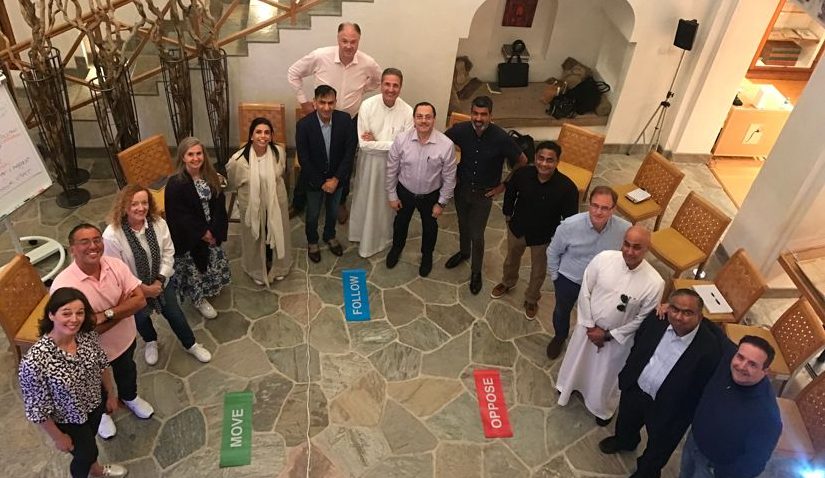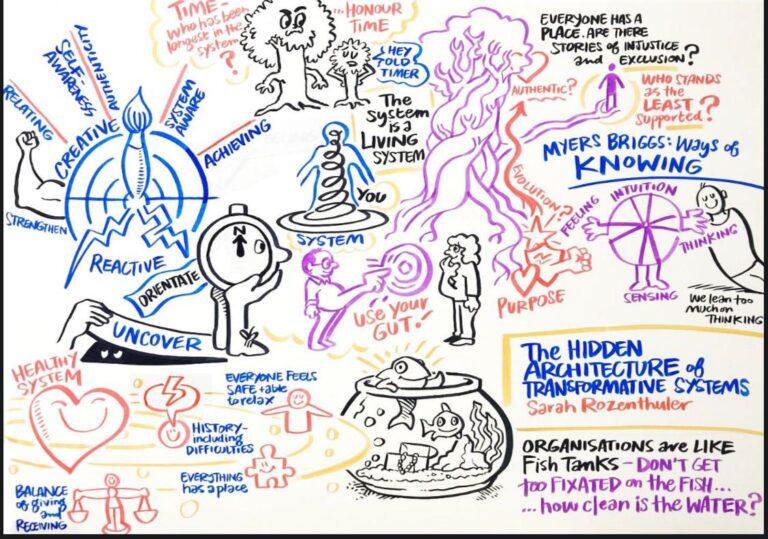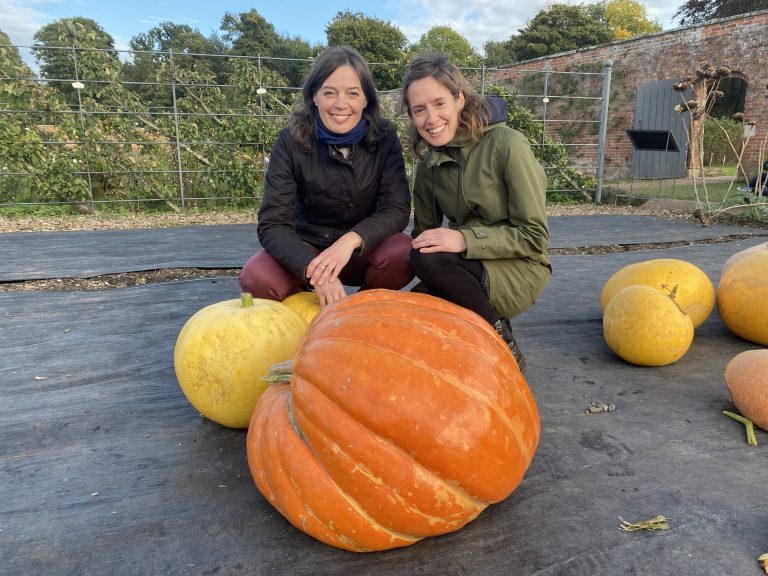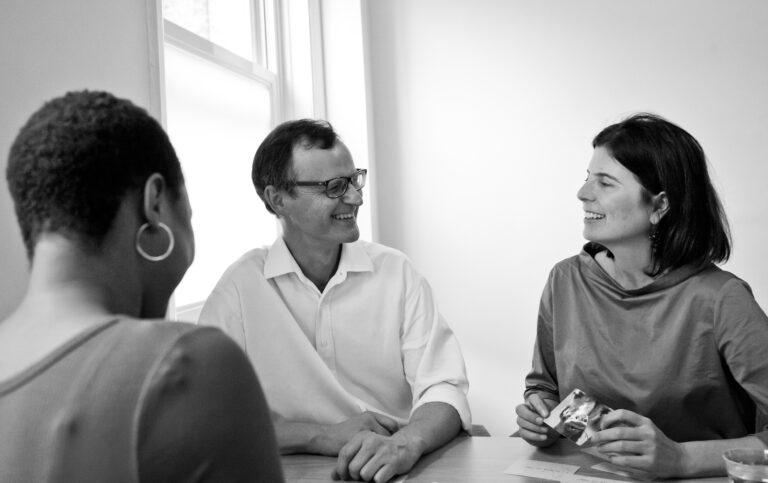I learnt about ‘holding space’ the hard way when I facilitated a session for a UK building society several years ago. It was on a Monday after I’d flown through the night on Saturday from the States. The red-eye flight had been a shocker with turbulence keeping me awake most of the journey.
By mid-morning on the Monday, I was puzzled. By this point in a session, a group had usually started to ‘gather’ but this group wasn’t gelling. They were still talking past one another rather than with each other. Some participants were checking their smart phones for messages (despite my request not to.) There were no ripples of humour, sustained eye contact or relaxed smiles.
‘Darn!’ It suddenly occurred to me why the usual signs indicating that the energy ‘field’ was becoming more coherent weren’t there. In my jet-lagged state, I’d missed the most fundamental intervention of them all: holding a check-in (more on this shortly.) By the end of the session, the group had started to talk together more easily but we never did arrive at ‘hive mind.’ Failing to hold a check-in cast a shadow over the whole meeting.
What ‘holding space’ means
I’ve heard other consultants describe ‘holding space’ as a ‘high art’ of leadership. But what does this mean? It’s an odd phrase. It might make you think of trying to nail jelly to a wall or hold water in a sieve. To make it real we need conceptual clarity and a model of practice.
Holding space includes and goes beyond ‘psychological safety’. This refers to an environment in which team members feel that they can take interpersonal risks without it being a career-limiting move; they are still respected and accepted. Whilst it’s vital that people feel safe to be open and share their questions and concerns, as Professor Amy Edmonson’s research has shown, a difficult conversation calls for additional qualities.
Research in the nuclear industry has shown that even in the context of divergent, diverse opinions, it is possible to create the conditions for constructive dialogue when five qualities are present. Through establishing a climate of inquiry, inclusion, spontaneity, possibility and freedom, people feel more connected, have a stronger sense of shared identity and agree to better utilisation of resources (Ferdig and Ludema, 2005).
I define ‘holding space’ as the capacity to create an expansive emotional space where stakeholders respect their differences, navigate conflict and surface new possibilities. The ‘new’ that arises – whether it’s a shared understanding, a compelling purpose or a set of aligned actions – serves the whole ecosystem not only the most senior person in the room. It emerges out of the ‘mesh’ of perspectives not out of one person thinking alone.
Changing the way people talk changes the way people act. Changing the way people act changes the outcomes that result. A thriving business, a world-class government department and a successful not-for-profit are all networks of conversations. All the people in these entities have leaders and hold meetings. If their conversations are constructive, the organisation is likely to be productive. If their conversations are destructive, there’s a real risk that the organisation flounders.
Build a ‘container’
Holding space is a subtle art and a vital skill that a leader can learn. A key enabler is to build a ‘container’ which is a safe enough space for people to show up as themselves and feel valued.
A ‘check-in’ process is a key tool for creating a space where people can ’land.’ It changes the atmosphere in a room when you give people the opportunity to ‘arrive’ fully. People’s presence – their undivided attention – is the most valuable resource in any organisation. Helping participants to let go of their journeys to arrive and put to one side distractions makes their speaking and thinking richer.
A ‘check-in’ also sets a pattern of roughly equal airtime. In an article originally published in Science in 2010, psychologists at the MIT Sloan School of Management found that several factors we might expect to be associated with effective teams were not relevant. These included the average IQ of the group, the IQ of the smartest member and the size of the group. The groups that were more likely to perform well were the ones where conversational turn-taking took place. Groups with a more even pattern of participation outperformed groups where one or two individuals dominated, even in more seemingly ‘intelligent’ groups.
A simple way to establish a pattern of full participation is to start with a ’check-in’. A check-in creates a ‘container’, making it less likely that one or two people will dominate the airwaves. It is easier for those who struggle to find their voice to speak after they have spoken once. The mix of different voices creates ‘psychological safety’ when people feel able to speak truthfully from their unique perspective.
How to hold a ‘check-in’
Think about a future meeting where it will be helpful to have full participation. What would be the benefits of starting to work in a more connected, human-centred way? What could be the challenges? Talk through your intention to start a meeting in a different way with a trusted colleague to help settle any nerves you might be feeling.
Mull over what ‘check-in’ question you could use at the start of the meeting to hear something from each person. Possible check-in questions include: What would be a great outcome from this session? What’s a question you’re holding that would be good for us to explore? What would you want a stakeholder to say about this meeting’s impact? Think about how you will express yourself authentically and the tone you want to set for others.
Finally, identify what process you’ll use. Will you (a) go round the table/circle/screen; (b) invite people to participate in a more random way by sensing when it’s their turn; (c) ask the person who’s spoken to ‘pass the baton’ and choose the next person; or (d) do something else? If you’re on a video call, you might invite people to speak in alphabetical order. With a global team, you could move from the southern hemisphere to the northern hemisphere or vice-versa (this geography ‘test’ might generate some much-needed mirth.)
\
Holding a check-in takes time and energy but it’s an investment that pays dividends. The conversation is richer as the group is more cohesive. It is not the responsibility of a leader to come up with all the great ideas, but it is their responsibility to create an environment in which great ideas can flow.






